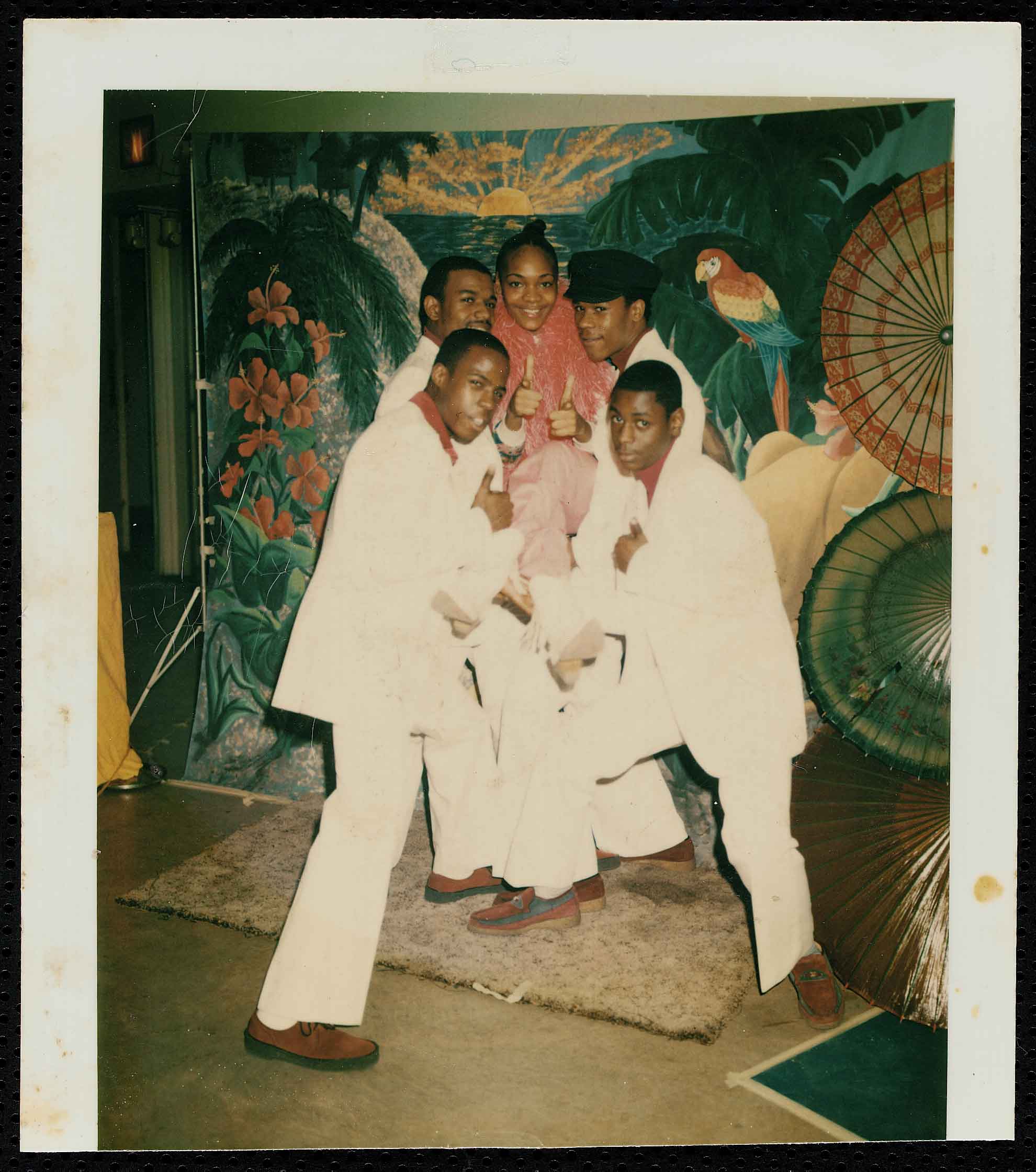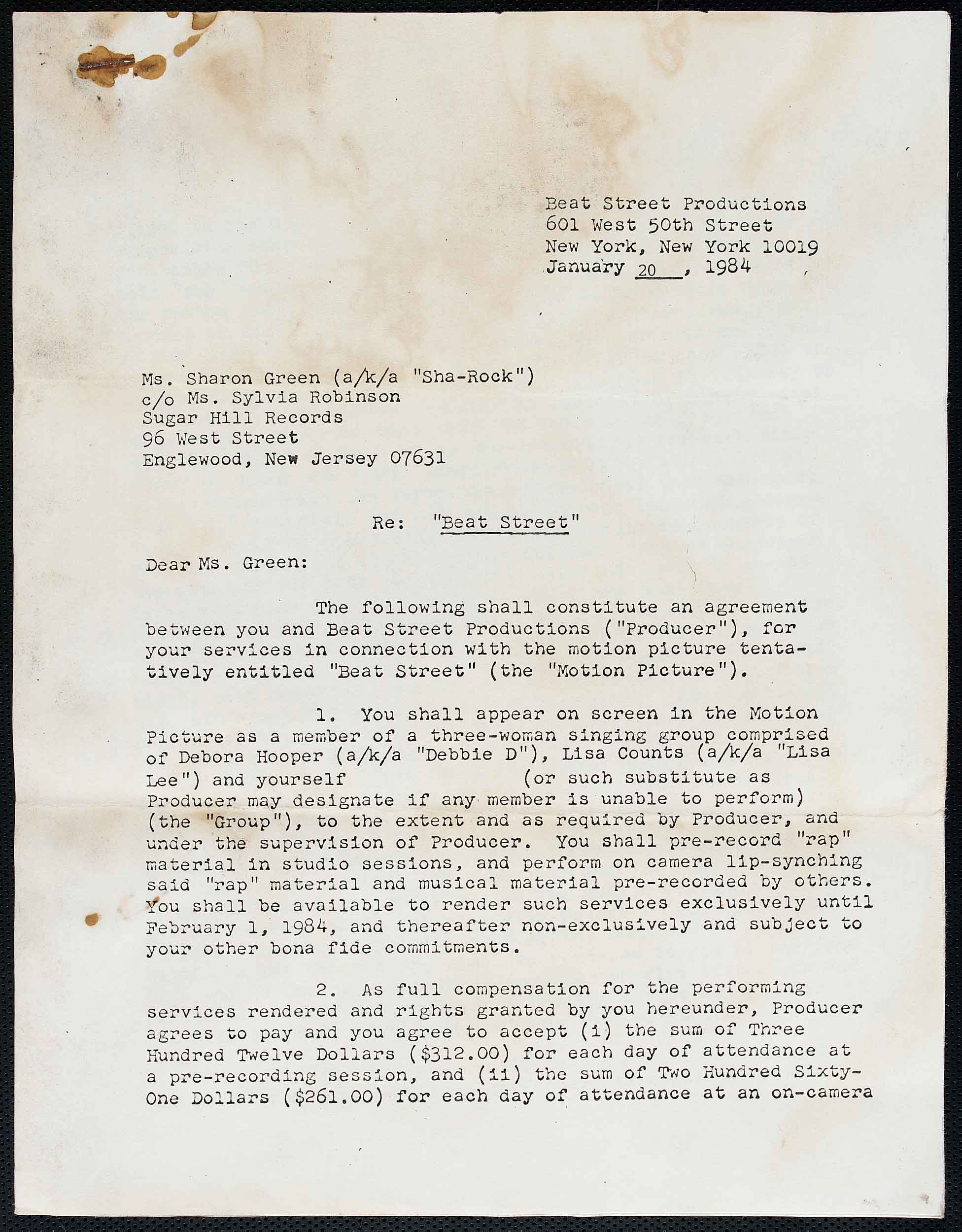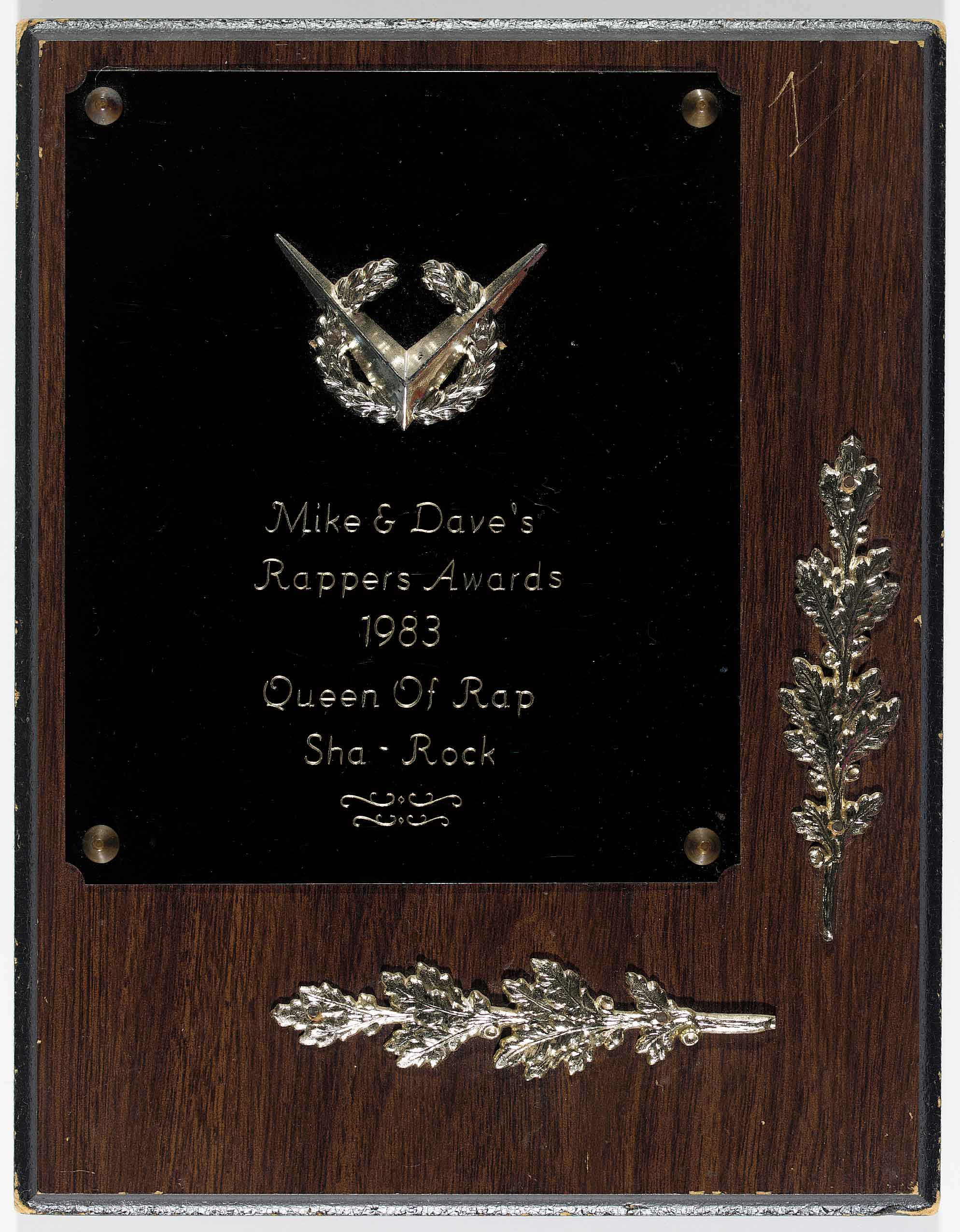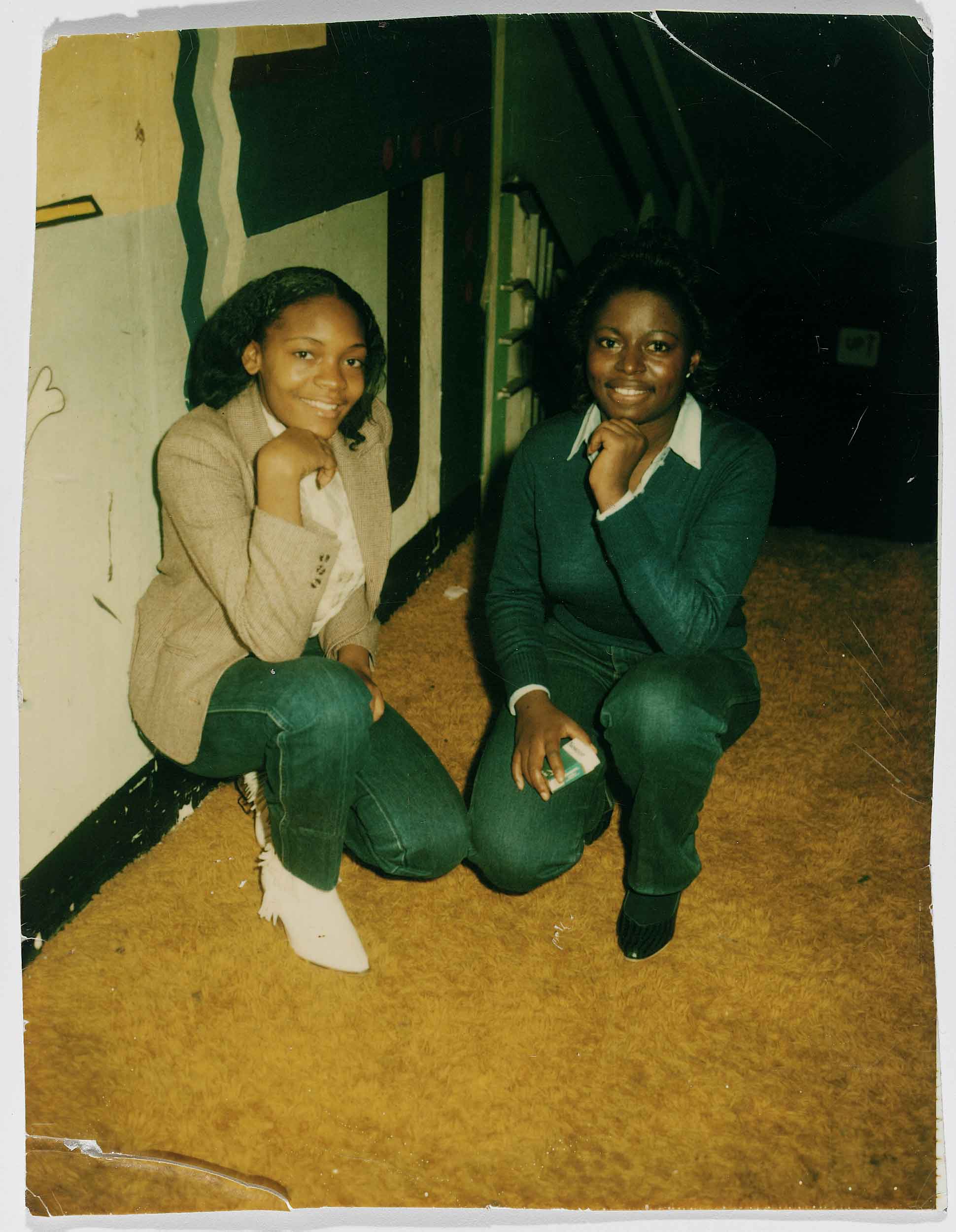Into the Vault: MoPOP Artifacts Related to "Mother of the Mic" MC Sha-Rock

Did you know just a small percentage of our collection is actually on display inside the Museum of Pop Culture? With more than 100,000 objects in our permanent collection, it becomes a little easier to understand why there can't be a place to publicly display each one of our artifacts at the same time. But just because a piece isn't currently on view at our nonprofit museum, doesn't mean it's not important to popular culture.
To offer visitors a peek behind the curtain at our museum, we're taking fans Into the Vault here on the MoPOP blog, highlighting artifacts from our broad collection and showcasing their place in popular culture.
Up next, we take a closer look at a handful of artifacts related to MC Sha-Rock, the rapper, b-girl, and +1 more from the hip-hop group The Funky 4 + 1 More as we get ready to celebrate Sha-Rock's birthday on October 25!

Funky 4+1 More at photo studio, 1981
MC Sha-Rock was born Sharon Green on October 25 in Wilmington, N.C. but grew up in the South Bronx. She was one of the original members of the hip-hop rap group known as The Funky 4+1 More where she was known as the 1 More. With The Funky 4+1 More being the first rap crew with a female, MC Sha-Rock is known as hip-hop’s “First Lady,” “Mother of the Mic,” and the “Luminary Icon” as she was the most prominent and influential female battle MC.

Contract between Sha-Rock and Beat Street Productions, January 20, 1984
When the The Funky 4+1 More disbanded, Sha-Rock joined a new group with two of her peers, Debbie D and Lisa Lee, called Us Girls. While part of Us Girls, they had their first major film debut in the 1984 hip-hop film Beat Street. Sha-Rock’s early contributions to hip-hop paved the way for not only urban youth growing up in the South Bronx but positioned the foundation for emerging female MCs in hip-hop.
- Related: Join MoPOP for a Conversation with Sha-Rock | 6 p.m. PT, November 19
Sha-Rock laid the groundwork for hip-hop culture and a legacy of firsts. She was the first woman rapper to perform live on TV, with her guest performance with The Funky 4+1 More on Saturday Night Live in 1981 performing their hit song “That’s The Joint.” The first to battle with hip-hop icons such as Grandmaster Flash and the Furious 5. The first to release a record commercially with The Funky 4+1 More and the first to be signed to a record label — Sugarhill Records. Sha-Rock is known for her skills as a hip-hop artist in a male-dominated arena. She was seen as a female MC with innovative rhyming skills, unmatched flow and prominent personality which is why she has set the bar as an icon in hip-hop culture.

Mike and Dave's Rappers Award for "Queen of Rap" in 1983

Photo of Sha-Rock and Angie B (from The Sequence) at Disco Fever, 1983
Explore more Into the Vault content + for contests, the latest news, and behind-the-scenes content, be sure to follow us on YouTube, Facebook, Instagram, and Twitter.
If you like what you see, support our work by making a donation or planning a visit to MoPOP today!
